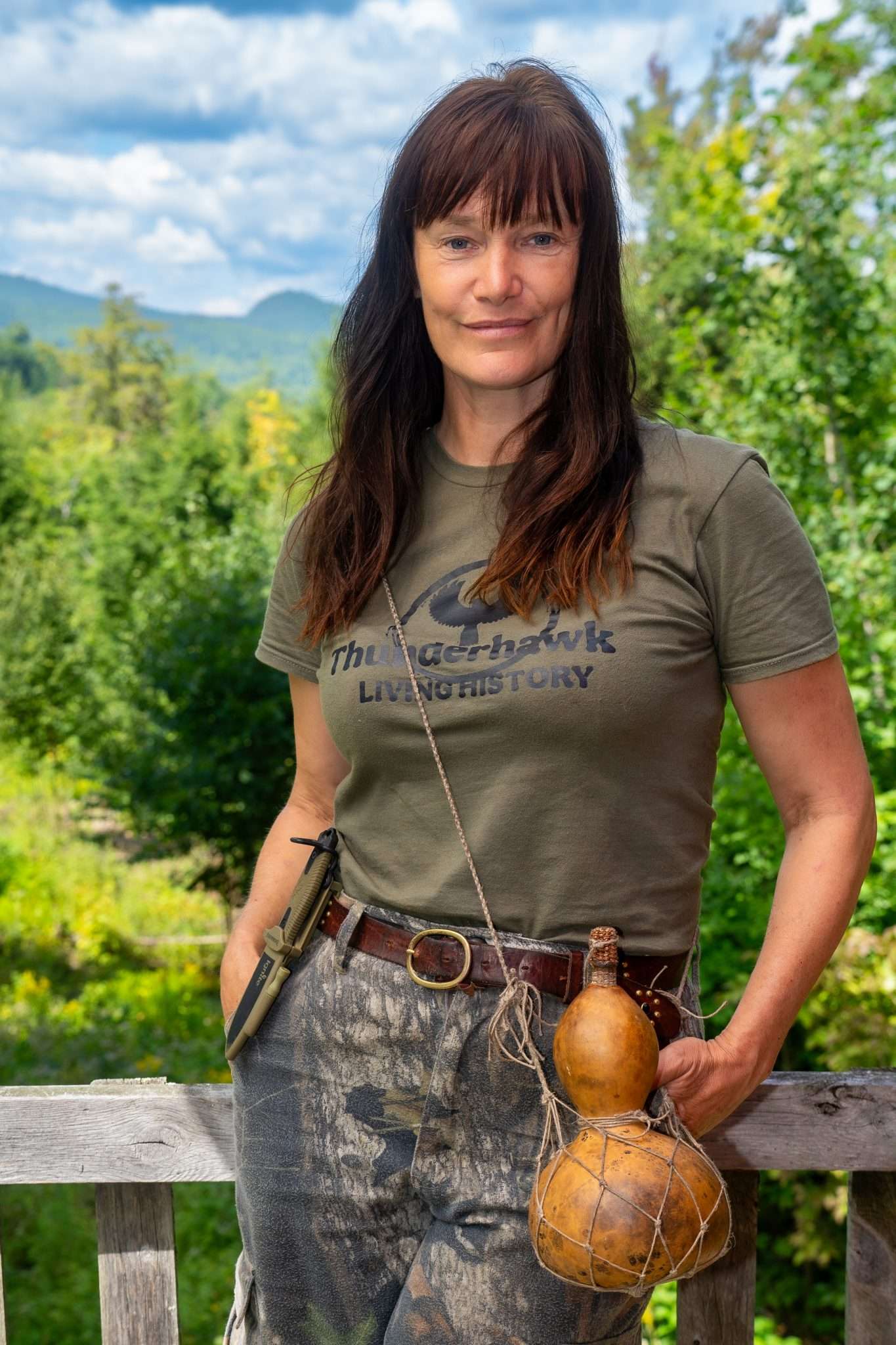
How an Essex County woman made the final 4 on the History Channel’s survival show “Alone”
By Gwendolyn Craig
Season 10 of the History Channel’s survival show “Alone” is over, with its Adirondacks contestant making the top four participants to withstand the Canadian wilderness the longest. Melanie Sawyer, an Essex County reenactor and survivalist, tapped out after 43 days.
The show follows 10 contestants, dropped in the province of Saskatchewan with 10 items, plus camera equipment to film their trials, tribulations and triumphs. Participants have a satellite phone so they may “tap out” when they’ve had enough. The last one standing wins $500,000.
The 55-year-old Sawyer was chosen out of 43,000 applicants. She was one of three women to make this season’s cast.
From her off-the-grid home in Moriah, Sawyer and her fiancé Brian McCormick talked with the Explorer about her time on the show. The pair operate Thunderhawk Living History School, which teaches about life in the 1700s in the Northeast and how settlers, soldiers and Indigenous peoples survived. Sawyer said she relied on many of those skills during her “Alone” time near Reindeer Lake.
Melanie Sawyer’s 10 items
- Bow and arrows
- Snare wire
- Fishing line and hooks
- Saw
- Multitool
- Sleeping bag
- Cooking pot
- Ferro rod
- Two sets of food rations
This interview has been abbreviated and edited for clarity.
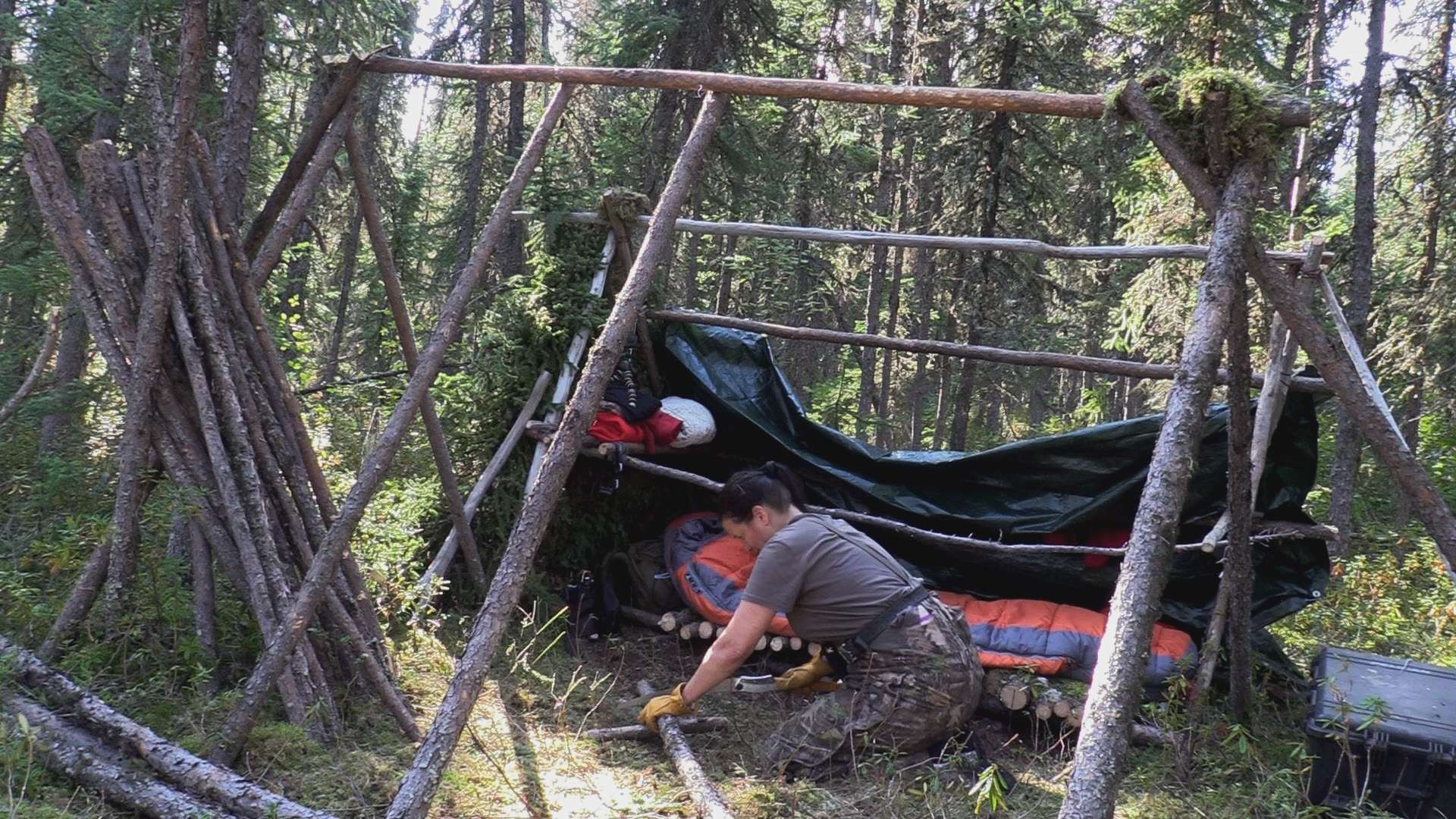
Q: What made you want to join “Alone”?
Sawyer: I’ve always been a fan of the show. I am now part of the “Alone” family. It’s an incredible, amazing opportunity. I think it’s important that women be represented in this.
Q: What was the process like to apply?
Sawyer: Usually contestants go off to a camp and test out all their survival skills. Because of COVID-19 looming over us, we had to do everything via Zoom. They just give you challenges that you have to complete. I passed them. When they told me I was on the show, I was ecstatic. I think I went out and shouted, “I’m on ‘Alone,’” to the mountains, which of course nobody heard because I’m in the middle of nowhere. I was psyched, psyched to be representing the Adirondacks and to be representing living historians. I’m an historical forager, and there were foods out there that literally saved my butt. It turned out that out of all 10 people, I lost the least amount of weight per day than anybody else because of my foraging skills. I knew about where to source carbohydrates and starches, the building blocks of energy and strength. I did that methodically every single day.
Q: Can you tell me more about what you were eating?
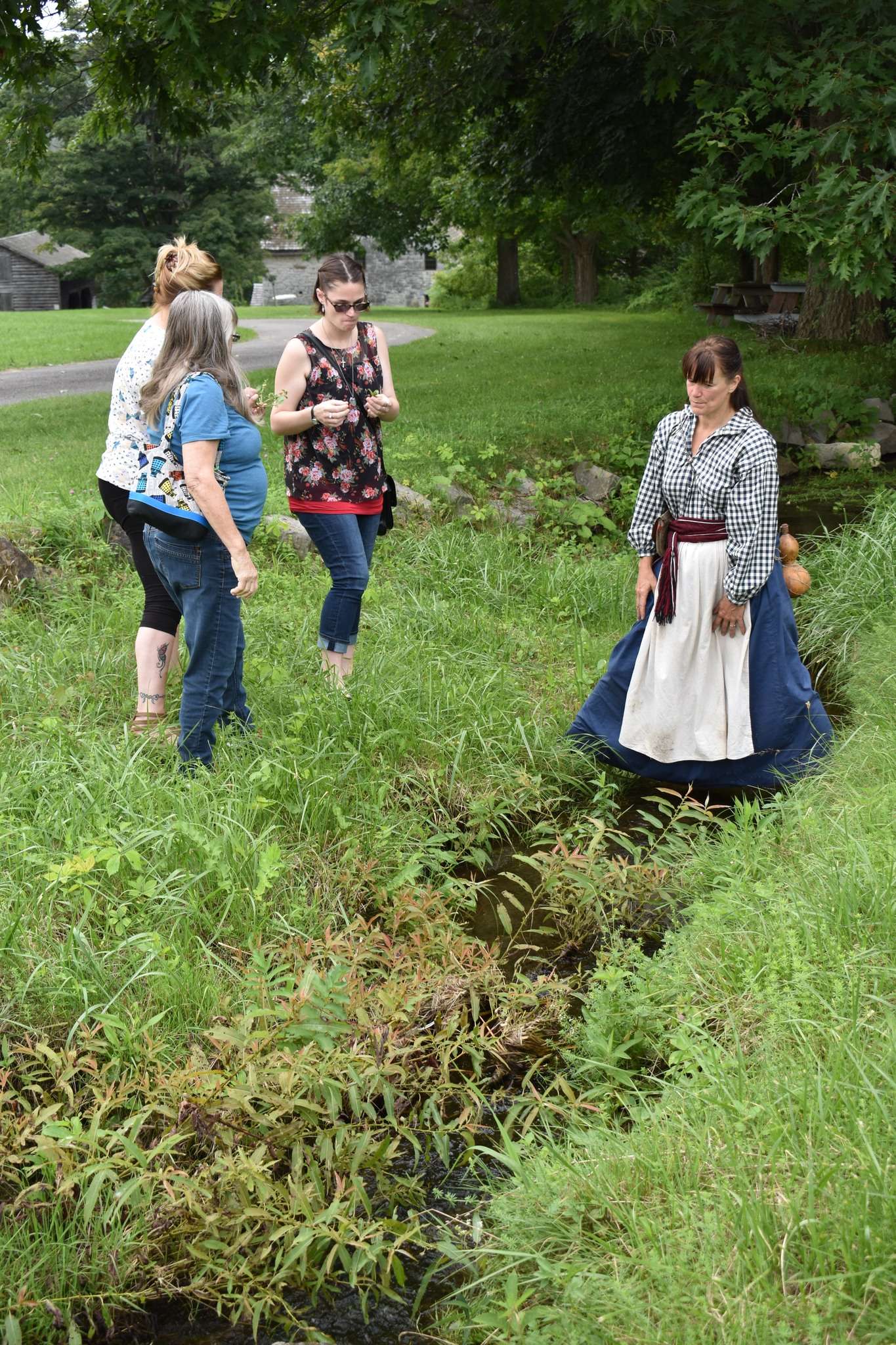
Sawyer: I think this year they decided to edit on an emotional side, so you didn’t really get to see things that we did. One of my 10 items was pemmican and jerky. The reason I did that was because, as a 1700’s hunter trapper, or someone who was going into the wilderness, that’s exactly what I would have taken. It has been historically documented. You would have taken pemmican, which is a mixture of fats and berries, and meat, whether it be bear or venison or beef. I boiled the fat from the pemmican off, and mixed that with the flours I was making to make bread patties around my fire. The flour I made, I was using reindeer lichen, rock tripe and dehydrated mushrooms. Reindeer lichen is the springy, white moss that you see on the mountains, even here in the Adirondacks. It has oxalic acid, and so you don’t want to eat it raw, but you have to boil it and in two clean changes of water. After that, you can eat it as it is in its springy, white form, which I actually don’t like. It’s too bouncy. I dried it out and then I ground it up into a flour. There was an occasional ruffled grouse that I managed to get with my bow. Then there was rock tripe, which is a black tripe that looks like sandpaper that clings to the rocks. It was documented in the 1776 Battle of Valley Forge, troops did not have enough food. Native guides began to show them the foods that they could source to survive, and one of the things they showed them was this black curly rock tripe. It swells up and becomes glutinous and tastes like oatmeal. Because of that, a lot of men did not perish.
Q: I recalled some contestants at the end, right after you had left the show, saying they thought you were still left because they were so impressed with your foraging.
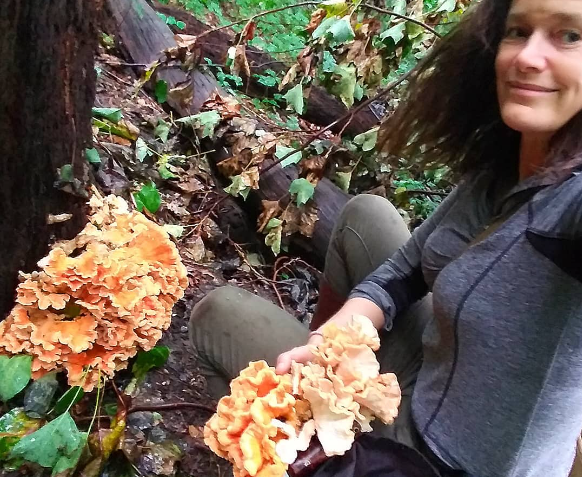
Sawyer: Thank you. Yeah, I mean, all of us did so much. We had to film for a minimum of 40 hours every week. There was a lot of food out there, just not so much big game. We all had problems with that. We were meant to go out the week before, but there had been a case of COVID in the camp, so we were told to remain for that week. I think that was possibly a reason why we didn’t see the bear but we saw the scat. I saw a caribou, but we weren’t allowed to hunt caribou. My shelter was really tightly insulated. I’d found clay early on. I’d used that to line my chimney so I didn’t have fire problems because of sparks from wood. I believe Wyatt (James “Wyatt Black, the runner-up of the show) had a problem with that. I’m lucky because of living the life I do, off-grid here, you get to learn a lot of things that people don’t necessarily know.
Q: What was your reaction to seeing the whole show? And were there many more behind-the-scenes things that didn’t make the cut you would share?
Sawyer: We all have this mournful feeling of the 90% of the stuff that we did that didn’t make the show. I think the choices of shots that they decided to use, appeared to make me look somewhat emotional. Two things, which were embarrassing as all heck to me, were peeing in front of the trail cam, because I didn’t know about the trail cam. At the medical check, I said I don’t want that on camera. People at the History Channel overruled it because they said it was too good of footage. So you see me multiple times being unhappy. If I’d had to do that show again, I certainly would be a lot more cautious.
Q: Tell me more about your site near Reindeer Lake (some 700 miles north of North Dakota).
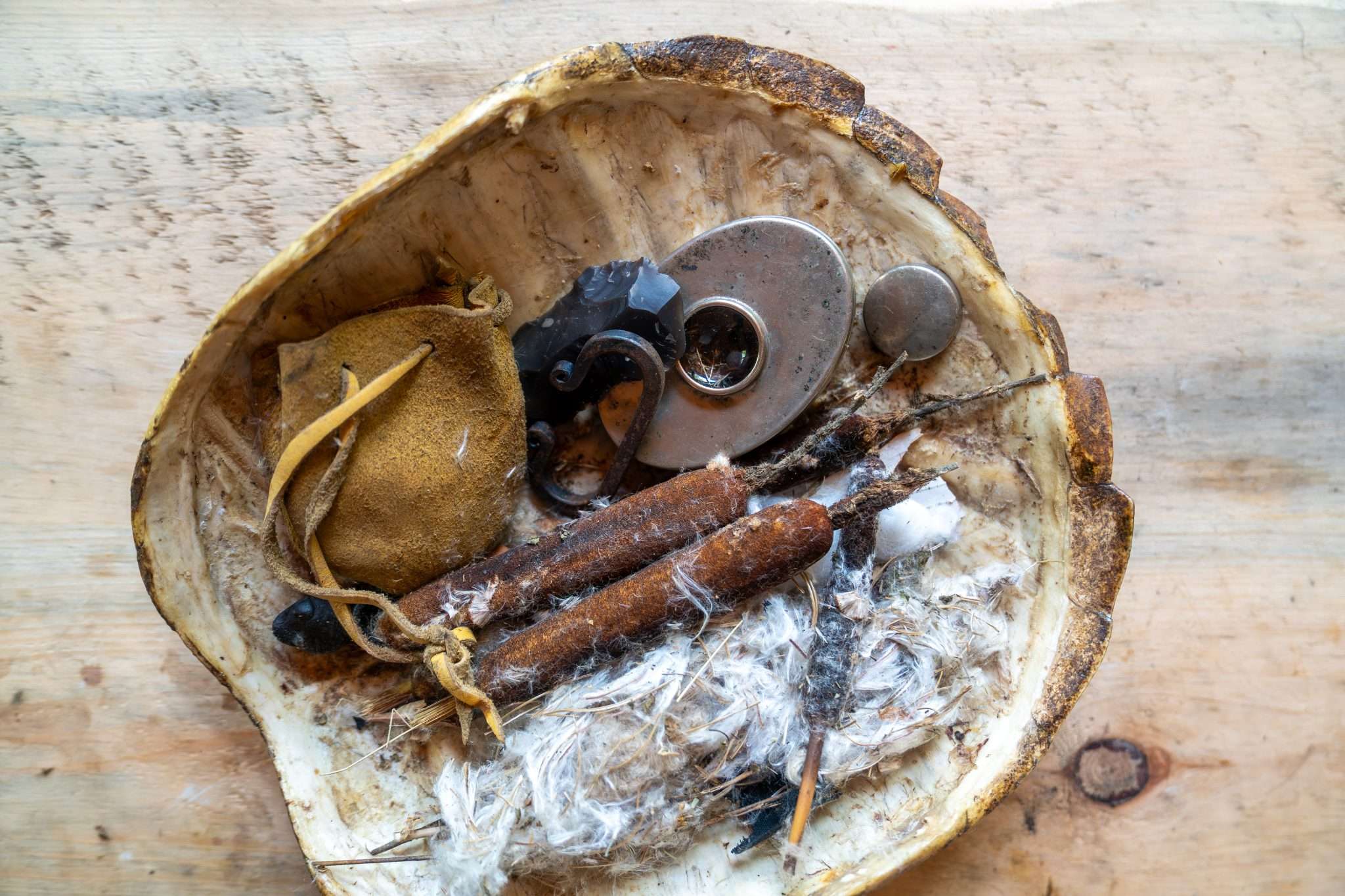
Sawyer: The sunsets were absolutely incredible. The land itself was amazing. It was owned by the indigenous people of the area. They had given us permission to go on it. I think I saw one boat pull up, and you have to film it. If anybody else comes in your area, you have to film it immediately and you have to radio it in so that it’s showing you’re not cheating. I did have problems fishing, which was a pain in the butt because I am a fisherwoman. After they show the footage of me saying that I only found one fish, it was not correct. I had three big ones, but you don’t see that. You didn’t see me holding a bow at all. You didn’t see me snaring. I had snares out. It’s just the storyline that’s decided for you, and there’s nothing you can do about it. It wasn’t the food that made me tap. It was Brian. You just come to a point where you start questioning what you’re actually doing. I knew my skills. I knew my shelter. I knew I had enough wood. I’m not prepared to suffer the medical problems that have been shown time and time again with the contestants afterwards. You saw that Wyatt lost his toenails. Another contestant lost their front teeth. Another person had edema. People went to the hospital. I’m not prepared to do that to myself. I’m doing good. I’m in a good physical and mental place. You always have regrets. But I don’t regret coming home when I did.
Q: What were you most excited to eat when you were done with the show?
Sawyer: When anyone is pulled from the show, they do this thing called a mandatory refeeding process. They put you on this special diet, overseen by a doctor, to make sure that you can absorb your carbs, starches, fats and milks again. So I didn’t really eat anything. The thing I really wanted to do was to just drink a pint of Guinness. That’s exactly what I did. I got off the plane at Plattsburgh. Brian picked me up. It was like date night. I think this is important to understand. I went in (to “Alone”) at 208 pounds, I think, but I only managed to put 20 pounds on. I was 180-something before I started putting the weight on, so I only had 20 pounds extra. Alan (Alan Tenta, winner of the show) admitted that he was fasting, which is the “Alone”-show word for starving. I’m not prepared to do that. I’m not going to do that to my body. We launched on Sept. 15th. I think I was there two weeks before in base camp. We went in by puddle jumper. It was incredible. The location was absolutely amazing. I take my hat off to them for picking me and letting me have that opportunity.
Q: (To McCormick) What were your thoughts when she was on the show?
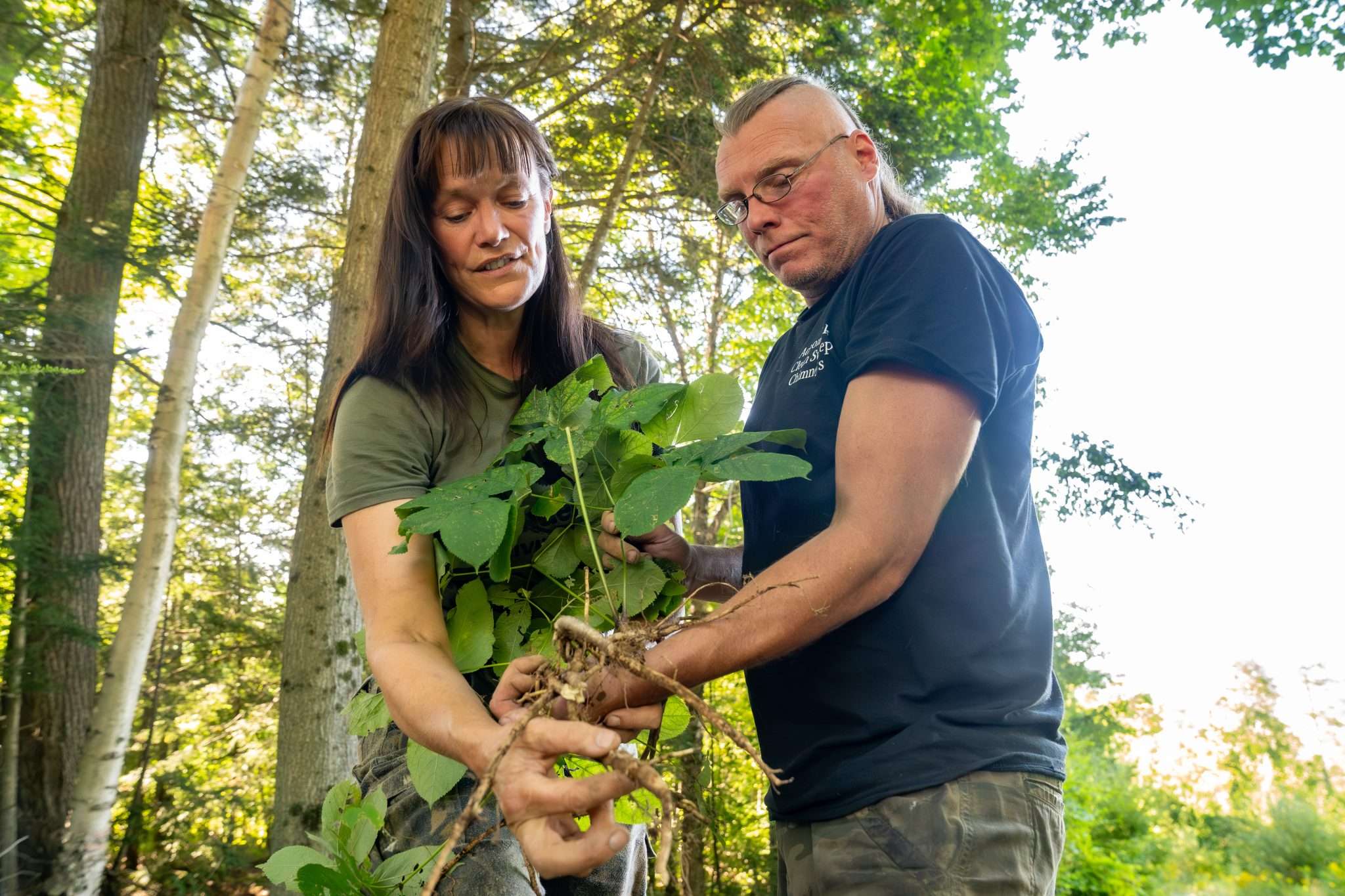
McCormick: I figured she was going to win. I built her an upstairs bathroom while she was gone. She actually called me, I was in a Walmart parking lot getting supplies down in Glens Falls. I wasn’t expecting it. I was expecting it months later.
Sawyer: Thank you very much, Brian. Had I got big game? I would have been out there a lot longer. I had 14 days of food. Alan stayed out there for 66 days. I would have needed a lot more. And psychologically, a lot of that is a head game. When they come for medical checks, they spend 20 minutes doing a medical check and an hour and a half doing video interviews. They’re asking you questions about what you miss about home, home, home, home. I don’t regret it. I proved to myself what I know I’m capable of.
Q: Any words of advice to future contestants?
Sawyer: I’d say do your research. To people who want to do this show, definitely apply. Use your social media as a platform for advertising your skills. Show what you’ve got. Show your personality. Most of all, have fun and don’t go out there to starve because it’s not worth it. Your health is worth a lot more than $500,000.
"bread" - Google News
August 31, 2023 at 04:42PM
https://ift.tt/30AcosR
Baking bread in the Saskatchewan wilderness - Adirondack Explorer
"bread" - Google News
https://ift.tt/lm8Myr6
https://ift.tt/PO0L1x2
Bagikan Berita Ini














0 Response to "Baking bread in the Saskatchewan wilderness - Adirondack Explorer"
Post a Comment